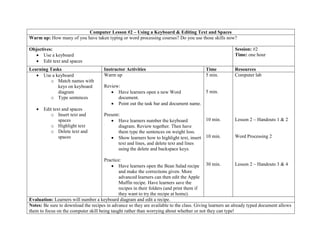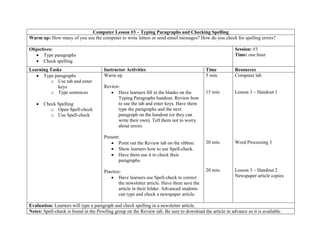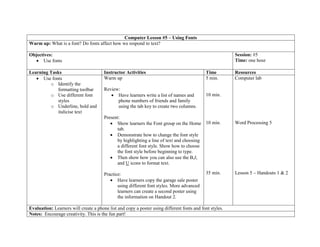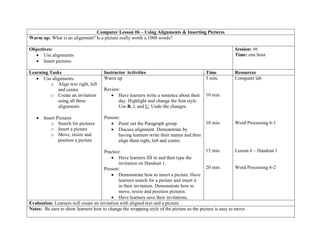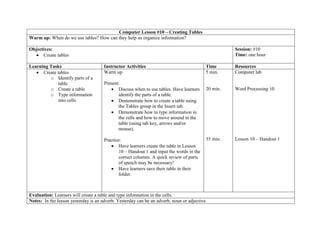This document provides an overview of a 6-part computer lesson series aimed at teaching basic computer and document skills. The lessons cover naming computer parts, using Windows, managing documents, using a keyboard and editing text, typing paragraphs and checking spelling, using tabs and typing letters, and using fonts. Each lesson includes learning tasks, instructor activities, time allotments, and required resources. The lessons involve hands-on activities like matching computer parts, opening and saving documents, editing recipes, typing paragraphs and letters, and using different fonts and formatting tools.

